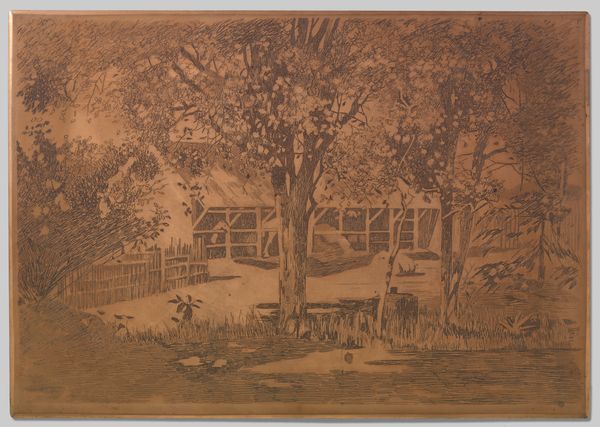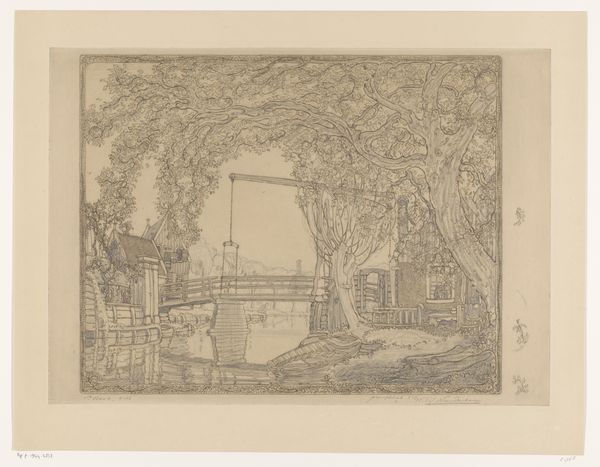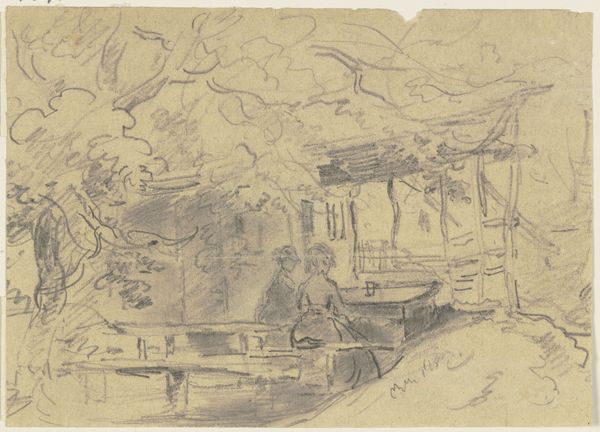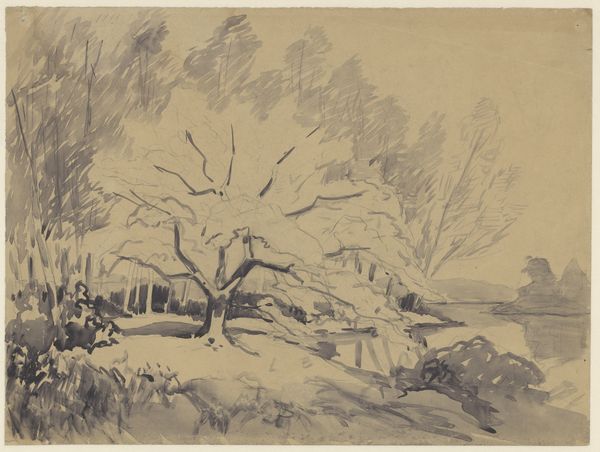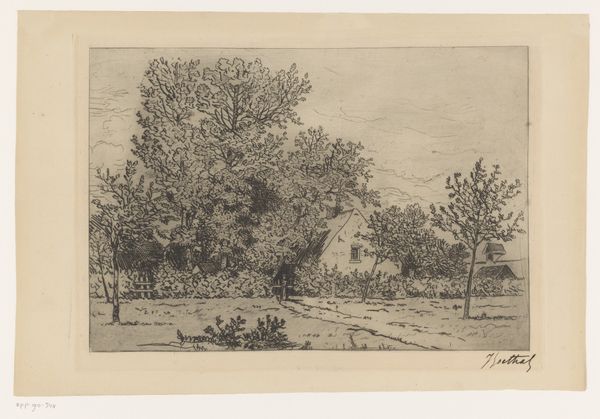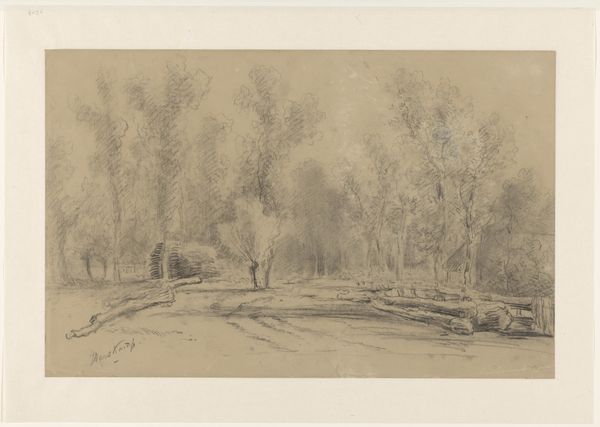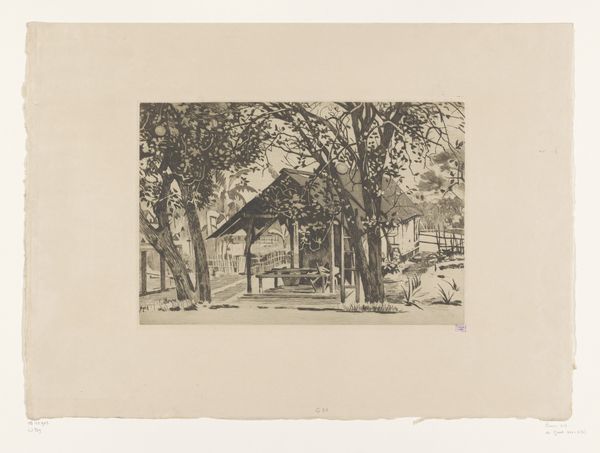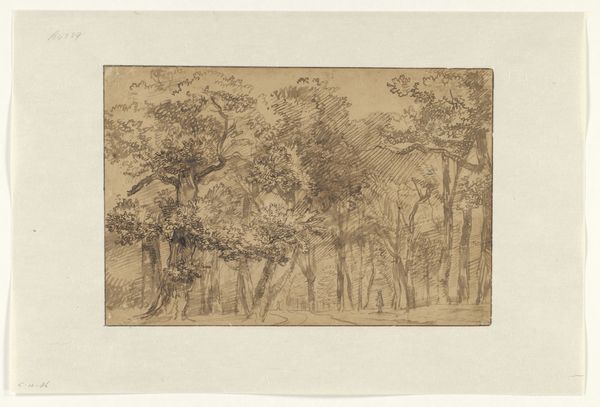
drawing, print, etching, intaglio, ink, pencil
#
drawing
#
toned paper
#
ink painting
# print
#
etching
#
intaglio
#
landscape
#
ink
#
pencil
Dimensions: height 281 mm, width 400 mm
Copyright: Rijks Museum: Open Domain
Editor: Here we have Willem Witsen’s "Bijgebouwen, Gambar" created around 1921. It’s an etching in ink and pencil on toned paper, depicting outbuildings. It feels so intimate and serene, like a private, almost forgotten space. What do you see in this piece, considering its historical context? Curator: Looking at Witsen's etching, I'm struck by its engagement with the concept of the periphery. Note how the “bijgebouwen,” or outbuildings, aren't presented as grand architecture. They’re relegated to the edges, literally and perhaps socially. How might this placement reflect the social values of the time regarding labor or rural life, perhaps the shift towards industrialization? Editor: That’s a great point. Maybe it speaks to the changing roles of these spaces, becoming less central to the economy? Curator: Precisely. The image also has an intriguing link to colonial visual culture, doesn’t it? Gambar, Indonesia was then part of the Dutch East Indies. Images like this shaped European perceptions of colonized lands, and their artistic representation can be seen as enmeshed with power dynamics. How do you interpret the role of nature in framing this scene? Editor: I see how the overgrowth softens the image, perhaps romanticizing the colonial landscape for a European audience, blurring any harsh realities. Curator: Exactly. This softens not only the visual, but potentially the narrative, downplaying any tensions. In thinking about art’s public role, consider who this image was *for*. Not necessarily the people in Gambar, right? The piece gives a glimpse of a very specific historical moment –the meeting point between Dutch colonialism and a burgeoning modern art world, carefully constructing narratives of "the other". What's been most revealing for you? Editor: Definitely the subtle politics of landscape art, and how it participated in broader historical narratives. Curator: For me, it’s recognizing that even seemingly tranquil scenes are embedded within socio-political forces.
Comments
No comments
Be the first to comment and join the conversation on the ultimate creative platform.
